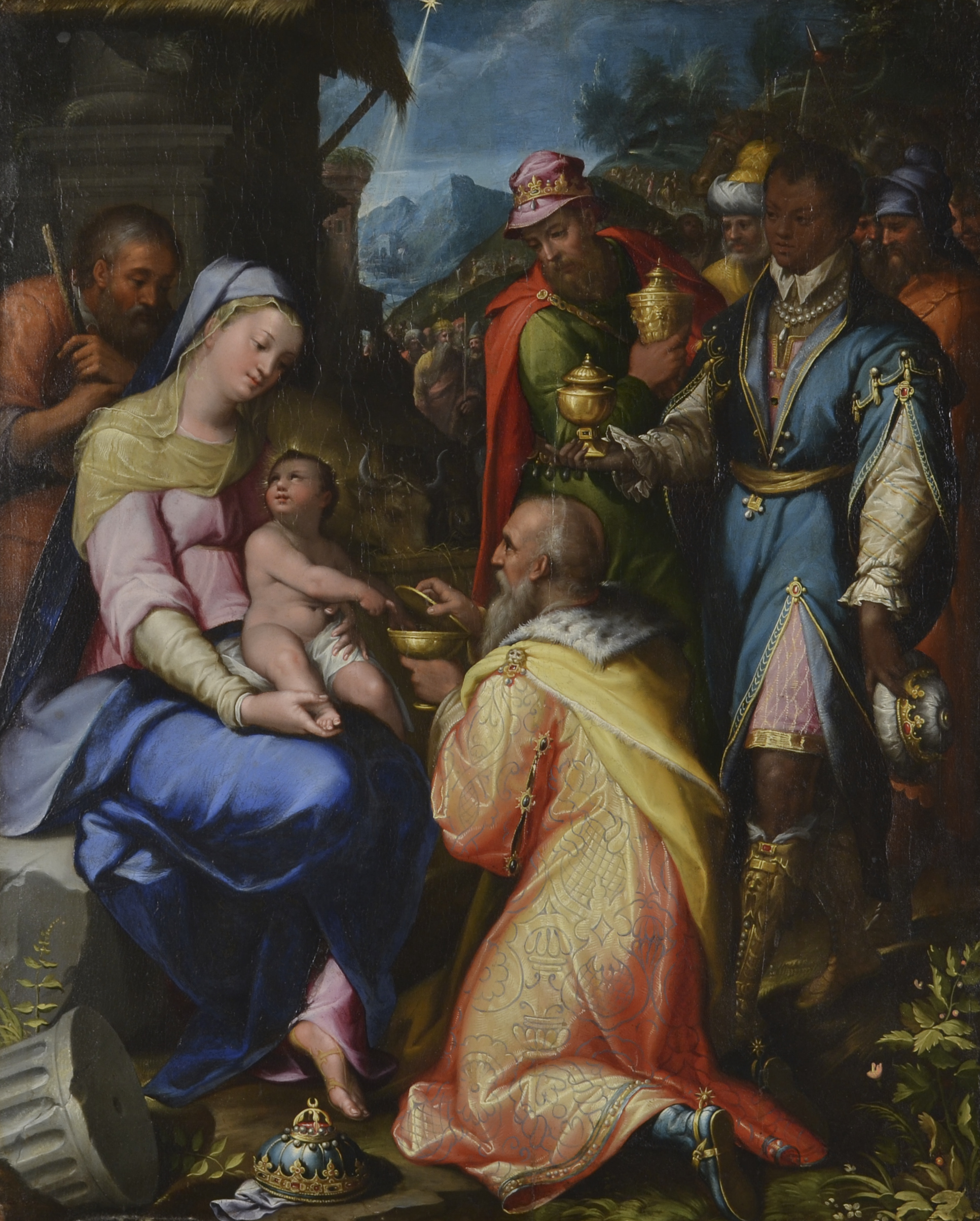While The Center is always excited to work on challenging contemporary projects in which new media and methods are used, we still enjoy the oldies but goodies. Recently our Senior Paintings Conservator, Amber Schabdach, conserved L’adorazione dei Magi, an oil on panel piece circa 1600. L’adorazione dei Magi, or The Adoration of the Magi, was brought to The Center to address handling damage.
Oil on panel is a resilient medium and its resilience is the reason we are able to appreciate so many pieces from centuries past. The techniques used by the Old Masters are tried and true, but sometimes there are obstacles presented when conserving a panel piece. One such obstacle is that panels are not always perfectly flat. For Adoration, the 3/4" panel with vertical grain with two horizontal batons on the back was slightly warped and convex. What this means is that special attention needed to be paid to the fit of the frame. Unfortunately, the frame in which Adoration arrived was not deep enough to support the panel and would need to be replaced.
An additional concern with oil on panel lays in the nature of wood itself. There were numerous wood grain cracks which in turn caused tenting cracks in the paint layer. While most of these cracks were stable, some were hollow beneath the tenting. Tenting cracks are caused by the reactive nature of the panel. When a there are fluctuations in the environment, either in humidity or temperature, the panel will expand and contract. The paint layer will remain the same size, so as the panel shrinks; the paint layer juts upwards resulting in small tent-like cracks. There were also numerous drying cracks in the darker colors of the painting; but as these cracks were stable, no treatment was recommended at that time.
There was also evidence of a previous repair on a crack on the back of the panel; the crack had been glued and secured with a butterfly mend. A butterfly mend is a traditional conservation technique in which a small, butterfly-shaped piece of wood is inserted into the panel. This technique, while effective, is considered invasive and is not used regularly in painting conservation today.
There was evidence of a previous repair on the crack running down the center of the painting; the previous repair which was slightly open and insecure. There was also a 6" vertical crack to the right of the center of the painting; the crack was insecure.
There are many areas of previous repaint throughout the painting; the areas of repaint still match the surrounding areas. In the image below, the UV photo shows the areas of repainting campaigns which present like darker patches in the image.
The painting was photographed for in-house documentation before and after treatment. The painting was then surface cleaned to remove grime. The cracks in the paint layer were consolidated as the conservator delicately injected conservation adhesive into the cracks working though both the front and the back of the piece. Losses were filled and textured using an appropriate conservation grade fill material.
Inpainting was carried out in areas of loss and abrasion using reversible conservation paints. Finally, a coat of varnish was applied to integrate the surface gloss and add additional UV protection.
Adoration was then installed in a period-appropriate reproduction frame which had the added depth needed to accommodate the piece.



